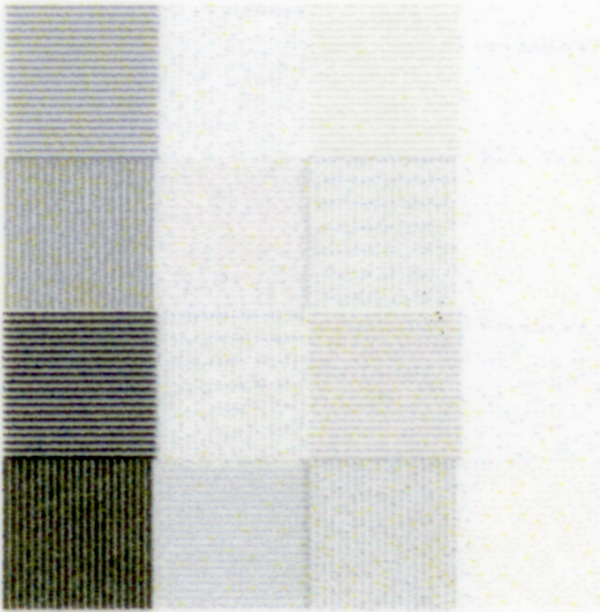Warning. What follows is probably only of interest to the technically obsessed.
In the last post I showed examples of printing a 720 ppi target with the Epson 3880 driver set to various options to prove that the “Finest Detail” checkbox controls whether the image is resampled to 360 ppi or 720 ppi. Interpreting the results means deciding whether the printer is correctly printing a 720 ppi (360 line pairs per inch) grating. which the printer doesn’t do very well.
We can use aliasing to magnify the effect. Let’s sent a 480 ppi grating to the printer with all four combinations of the dpi and Finest Detail settings. The ones where the driver resamples to 720 ppi will have 480 ppi (240 line pairs per inch) result, which the printer can print fairly well. The ones where the driver resamples to 360 ppi will have 240 ppi (120 line pairs per inch) result, because they will get aliased to 720 (twice the sampling frequency) minus 480 ppi.
Here we go; 2880/1440, “Finest Detail” Checked:
2880/1440, “Finest Detail” Cleared:-
1440/720, “Finest Detail” Checked:
1440/720, “Finest Detail” Cleared:
QED




Leave a Reply